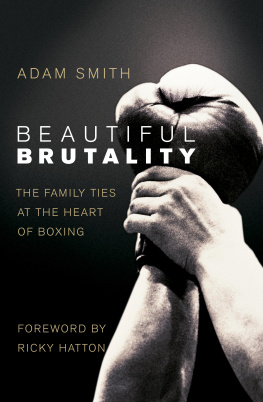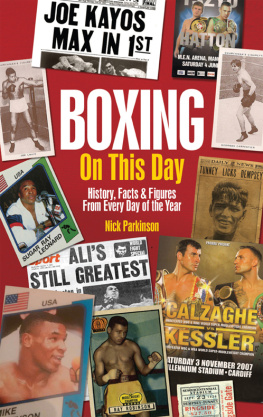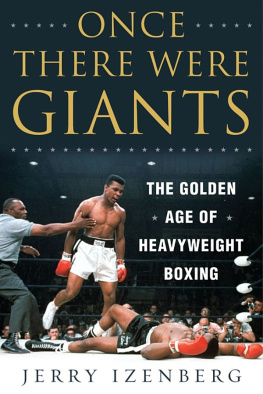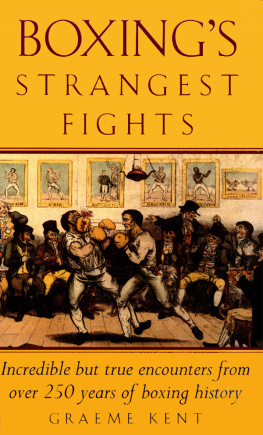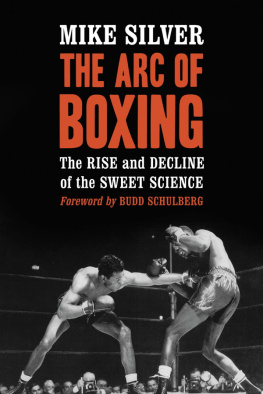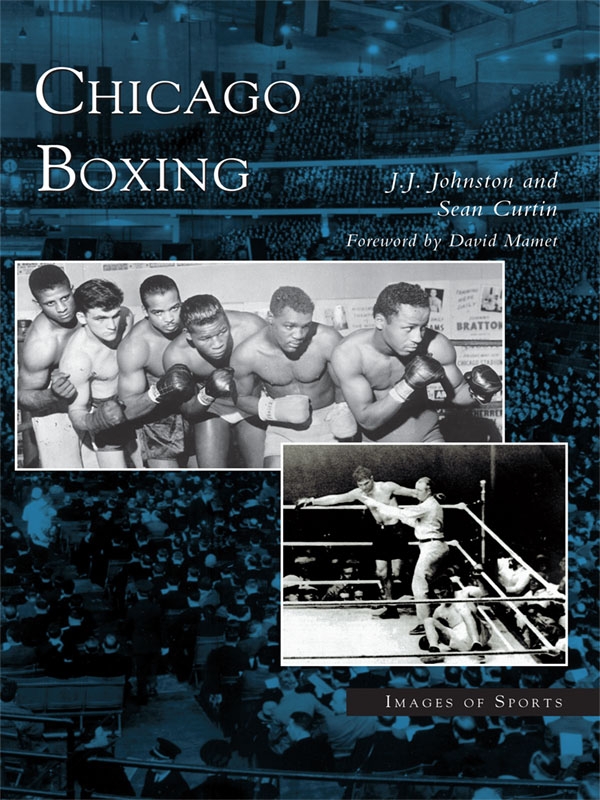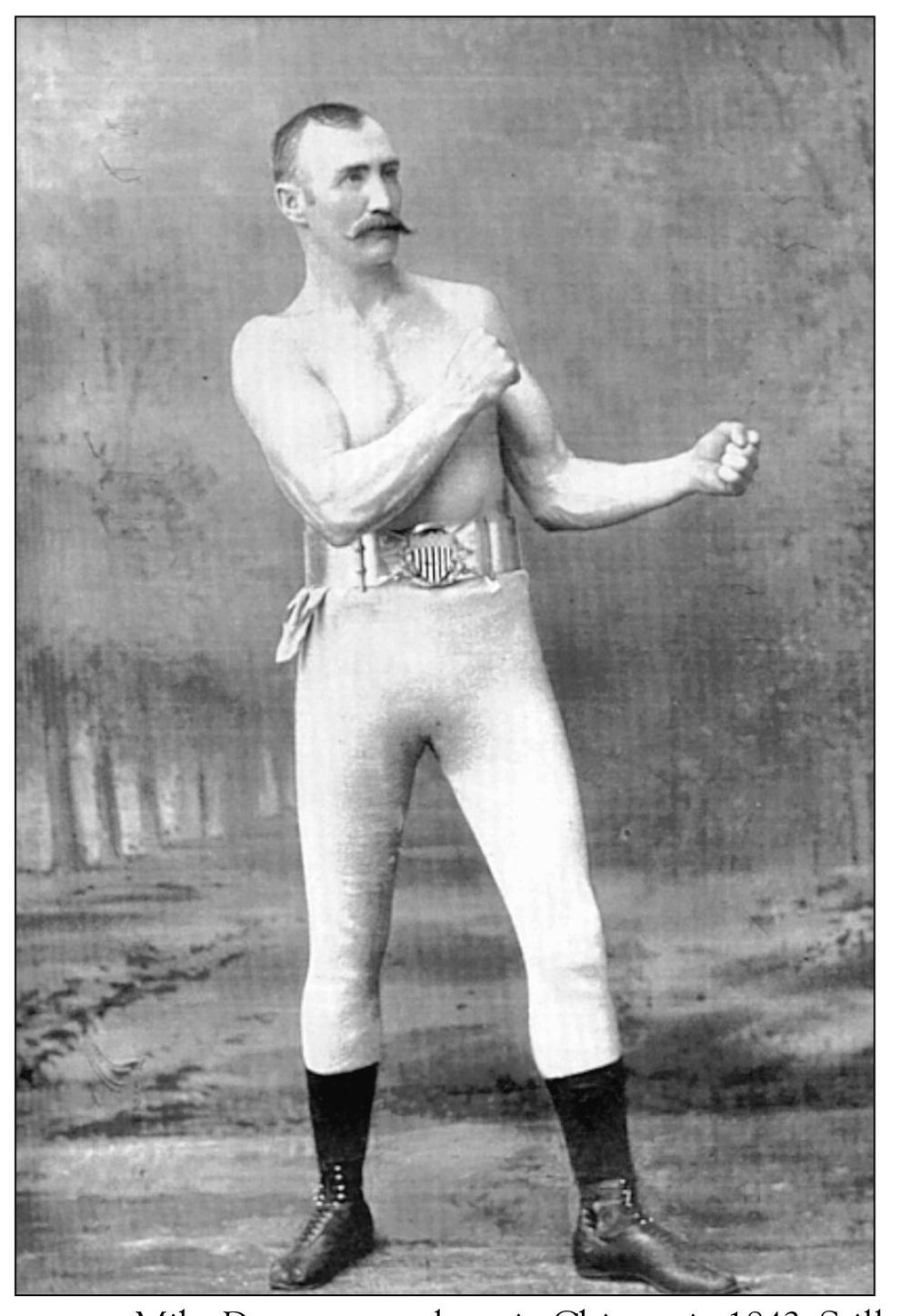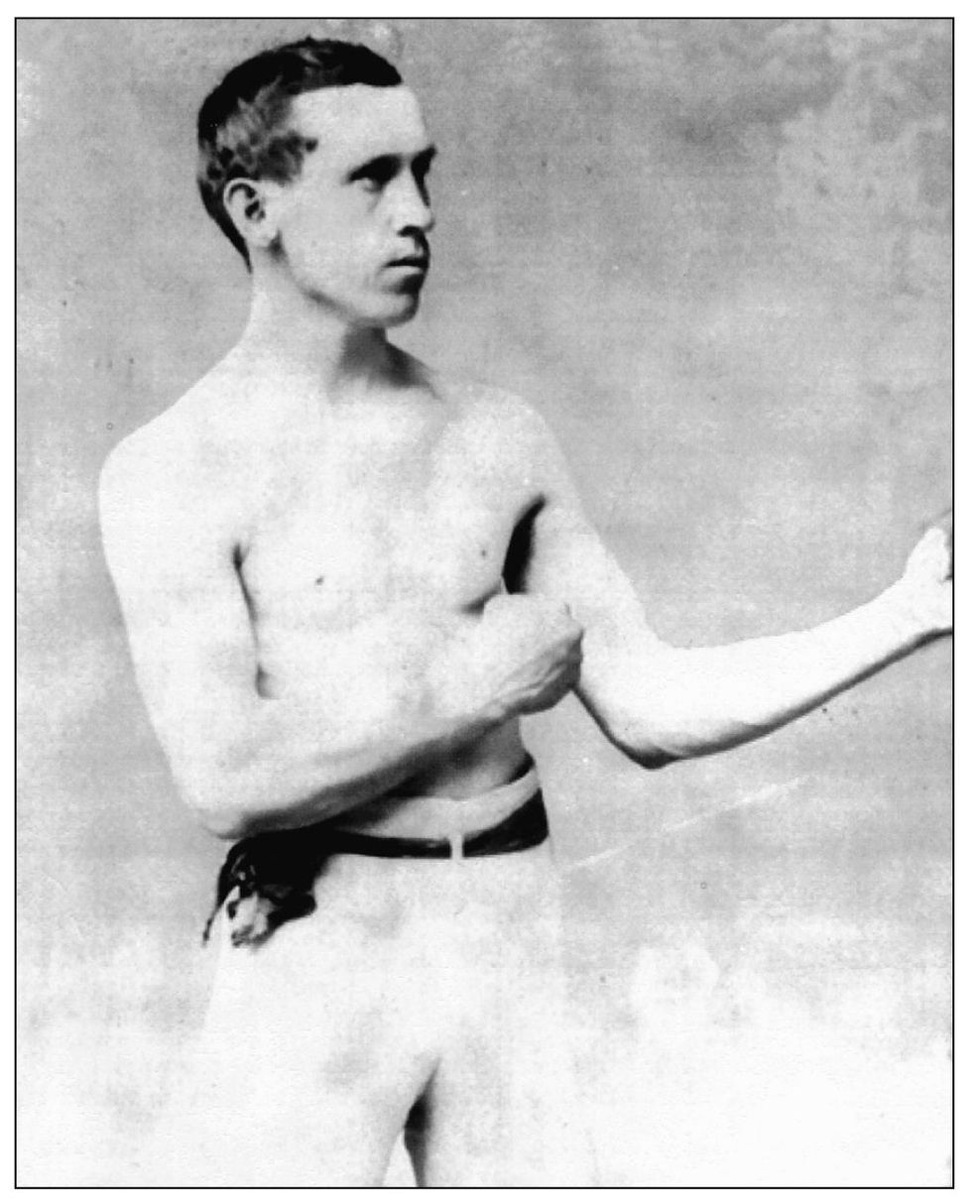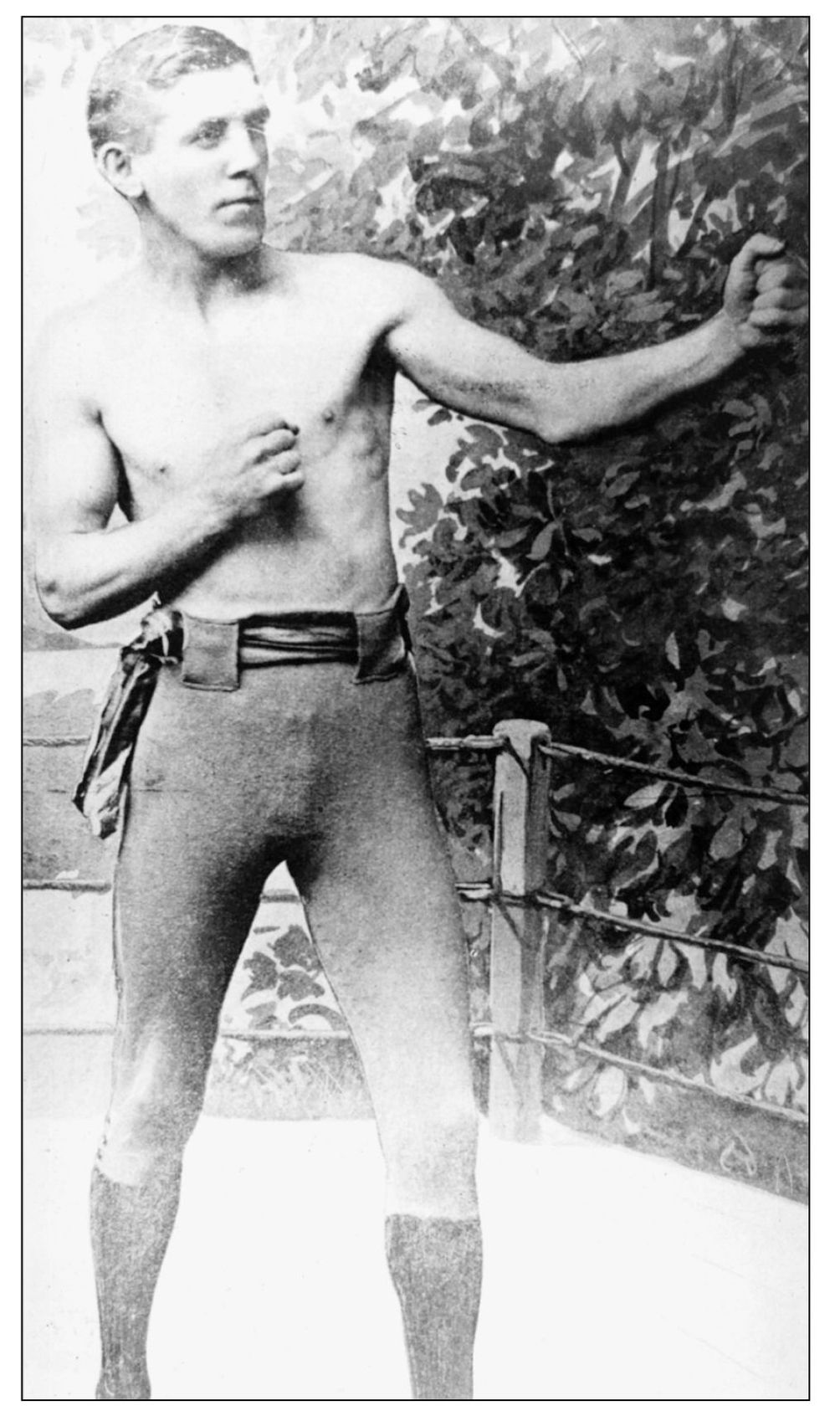ONE
19th Century
Pugilists, Promoters and Politicos
Boxing in Chicago really began after the Civil War. The town was booming with industry and the population was soaring, and fighters came from other parts of the country to compete, even though the sport was illegal in Chicago as well as the entire state of Illinois.
In the beginning, matches were held in the back rooms of saloons, in barns, and on the beaches of Lake Michigan. These were both bare-knuckle and glove contests. Some were fights to the finish while others were a specified number of rounds. These were brutal affairs with prize money divided unequally; the larger take went to the winners and smaller amounts to the losers. Some were winner take all contests, and the wagering was tremendous.
The foremost Promoter was a tough and resourceful Irishman named Dominick OMalley. He held fights on the sneak, and if the heat was on in the city, he would stage matches across the state line in Roby, Indiana, or on a nearby beach in Michigan.
In Chicago, OMalleys principle supporter was the gambling boss Mike McDonald, a boxing fan and sometime referee. When Chicago held its first Worlds Fair in 1893, Mayor Carter Harrison, Sr. permitted fights to be held openly with paid admissions at spacious Battery D Amory Arena. McDonald selected the promoter, a wily gambler and friend named Parson Davies. Davies was not a clergy man, he just dressed like one.
Boxing became an on-again off-again matter under Mayor Carter Harrison, Sr. and his son and successor Carter Harrison, Jr., both of whom were assassinated while in office. Still, arenas sprang up around the city. Among them were Apollo Hall at 12th and Blue Island; McGurns, at Davison and Wells; and the American, at 31st and Indiana. And many great champions like Jack McAllife, George Dixon, Kid Lavigne, the original Joe Walcott, Tommy Ryan, and Kid McCoy came to fight in Chicago. (McCoy was knocked out in one round by a second-rater named Jack McCormick in one of the eras biggest upsets.)
But because boxing matches in Chicago were limited to six rounds, big money fights of 20 and 25 rounds went to the West Coast. When Lou Houseman became the top Chicago promoter, after Parson Davies headed west, several bills to legalize boxing and permit longer fights were introduced in the Illinois Legislature; but they were always defeated. Not until the 1893 Columbian Exposition would things really look up for Chicago boxing.
PROFESSOR MIKE DONOVAN. Mike Donovan was born in Chicago in 1842. Still a teenager when the Civil War started in 1861, he joined the 71st Illinois Volunteers, saw action with this regiment in all their major battles, and was decorated for bravery. Mike had been taught to box before the war by his brother, Jerry, who was a professional. He continued to perfect his skills whenever he could find an opponent among his fellow soldiers. Size was not important to Donovan, who never weighed more than 160 pounds. He had both speed and a powerful punch, and the bigger soldiers proved easy prey. Mike was also a very clever boxer with a strong defense, difficult to hit cleanly.
After the war, Donovan began boxing professionally and soon became the middleweight champion of America. He could box 60 or 90 rounds bare knuckle, or go 10 rounds wearing gloves; either way, he beat all the contenders. He even fought a pair of three-round exhibitions to a draw with future heavyweight legend John L. Sullivan, who outweighed him by 50 pounds. In a career that lasted until 1891, Donovan won 24 of his 33 matches, fought to seven draws, and lost only two fightsboth on fouls.
After retiring from the ring, he became a boxing instructor at the New York Athletic Club, a post he held for 38 years. Future President Theodore Roosevelt was one of his students, and Donovan was later a frequent visitor to the White House, where he would spar with the Chief Executive.
Donovan died in 1918. His son, Arthur, who boxed professionally and also served as his fathers assistant, spent 50 years as a coach at the NYAC. Arthur Donovan also became the most famous referee in New York City. His son, Artie Donovan, was a great football player with the champion Baltimore Colts and later became an author and television personality.
HARRY GILMOREMAKER OF CHAMPIONS. Gilmore was Chicago boxings greatest teacher. His pupils included champions and top contenders. Right: Gilmore was a good fighter in his own right and at one time in the 1870s claimed the featherweight title. After running out of opponents in that division, he challenged undefeated Jack McAuliffe for the lightweight crown. On January 13, 1887, after a furious fight, Harry was stopped in the 28th round. Thereafter, he devoted his himself to his protgs and his boxing academy at McGurns Handball Court. (Photo from Harry Shaffer.) Below: Gilmore (front row, center) is seen with his top pupils, clockwise from lower left, Jimmy Barry, Frank Gerrard, Tommy White, George Kirwin, Eddie Santry, and Harry Forbes.
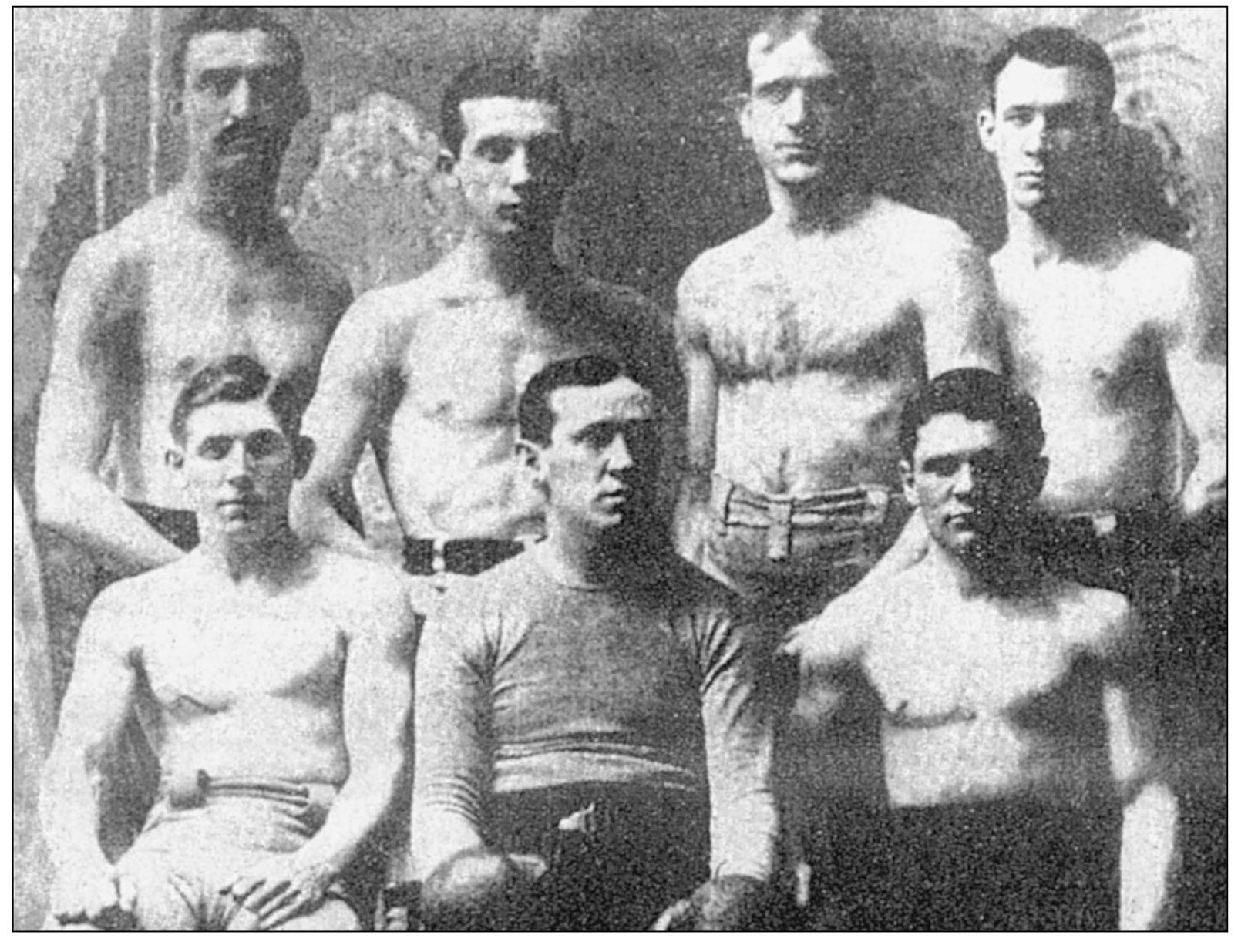
JIMMY BARRYUNDEFEATED CHAMPION. Jimmy, called the Little Tiger, was the first of Chicagos five bantamweight champions and perhaps the best. He was born and raised on the Chicagos Southside. A protg of Harry Gilmore, the hard-hitting Barry turned pro in 1891 and quickly became a Chicago fan favorite. He hit with surprising power for a boy who only weighed a little over a 100 pounds. In a just few years, he had taken on and knocked out most of the top fighters in his weight class , and many who were heavier. Finally, on September 15, 1894, he challenged the highly regarded Casper Leon in Lamont, Illinois, and knocked him out in 28 rounds to claim the world 118-pound title.
In 1897, after continuing his winning ways for three years, Jimmy Barry sailed off to London, England, to meet the British champion, Walter Croot, in a December 6 match to determine the undisputed bantamweight champion of the world. Croot was knocked out in the 20th round. He suffered a brain injury and died. The crestfallen Barry was exonerated by the coroners jury, but was never the same in the ring again. Afraid of causing serious injury, he held back on his punches and never scored another knockout. (He had KOd an amazing 38 out of 60 bouts.) He retired, undefeated, in 1899. Barry died in April of 1943, in Chicago, at 73 years of age.



